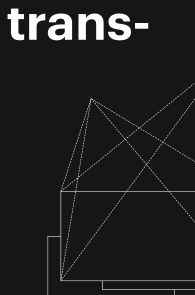open access
메뉴
open access
메뉴 ISSN : 2508-3309
ISSN : 2508-3309
This study begins with the necessity of the concept of reincarnation of film media and the inclusion of specific tendencies of contemporary films as post - cinema comes. Variable movements around recent films Challenging and experimental films show aesthetics that are difficult to approach with the analysis of classical mise en scene and montage. In this way, I review the dispositif proposed by Martin in films that are puzzling to criticize with the classical conceptual framework. This is because the concept of dispositive is a conceptual pile that extends more than a mise en scene and a montage. Dispositif films tend to be non-reproducible and non-narrative, but not all non-narrativef tendencies are dispositif films. Only the dispositif film is included in the flow. Dispositif movement has increased dramatically in the modern environment on which digital technology is based, but it is not a tendency to be found in any particular age. The movement has been detected in classical films, and the dispositif tendency has continued to exist in avant-garde films in the 1920s and some modernist films. First, for clear conceptualization of cinematic dispositif, this study examines the sources of dispositif debates that are being introduced into film theory today. In this process, the theory of Jean Louis Baudry, Michel Foucault, Agamben, Flusser, and Deleuze will help. The concept of dispositif was discussed by several scholars, including Baudry and Foucault, and today the notion of dispositif is defined across all these definitions. However, these various discussions are distinctly different from the cinematic dispositif or dispositif films that Martin advocates. Martin's proposed concept reminds us of the fundamentals of cinematic aesthetics that have distinguished between the mise-en-scene and the montage. And it will be able to reconsider those concepts and make it possible to view a thing a new light or create new films. The basic implications of dispositif are apparatus as devices, disposition and arrangement, the combination of heterogeneity. Thus, if you define a dispositif film in a word, it is a new 'constraint' consisting of rearrangement and arrangement of the heterogeneous elements that make up the conditions of the classical film. In order for something to become a new design, changes must be made in the arrangement and arrangement of the elements, forces, and forces that make up it. Naturally, the elements encompass both internal and external factors. These dispositif films have a variety of possibilities, such as reflection on the archival possibilities and the role of supervision, the reestablishment of active and creative audience, the reason for the film medium, and the ideological reflection. films can also 'network' quickly and easily with other media faster than any medium and create a new 'devised' aesthetic style. And the dispositif film that makes use of this will be a key keyword in reading the films that present the new trend of modern film. Because dispositif are so comprehensive and have a broad implication, there are certainly areas that are difficult to sophisticate. However this will have a positive effect on the future activation of dispositif studies end for end. Dispositif is difficult to elaborate the concept clearly, so it can be accessed from a wide range of dimensions and has theoretically infinite extensibility. At the beginning and end of the 21st century film, the concept of cinematic dispositif will become a decisive factor to dismantle old film aesthetics.